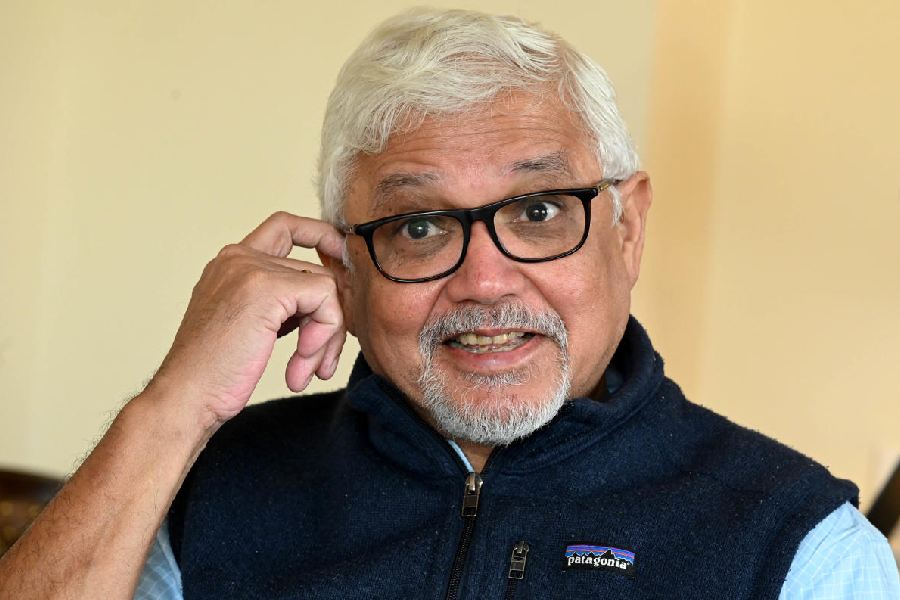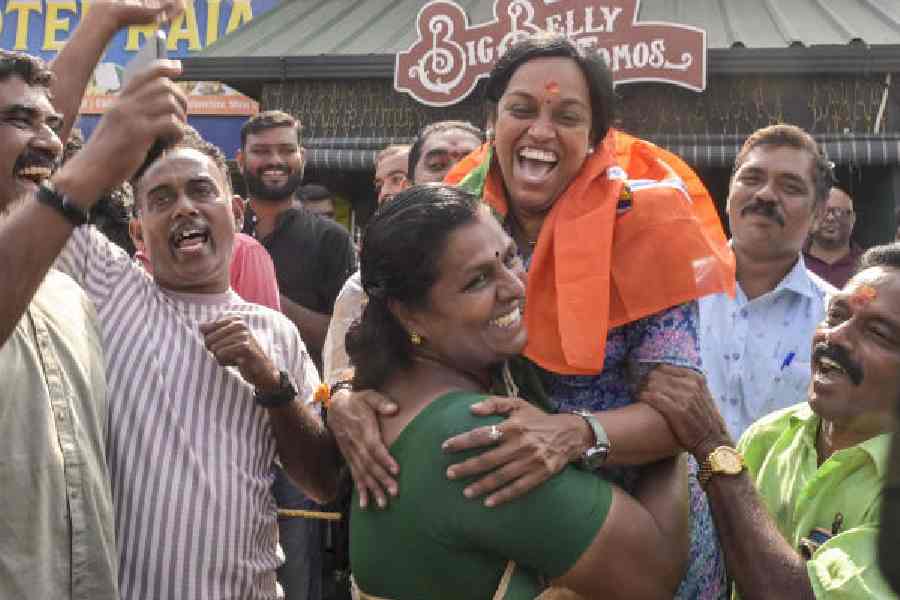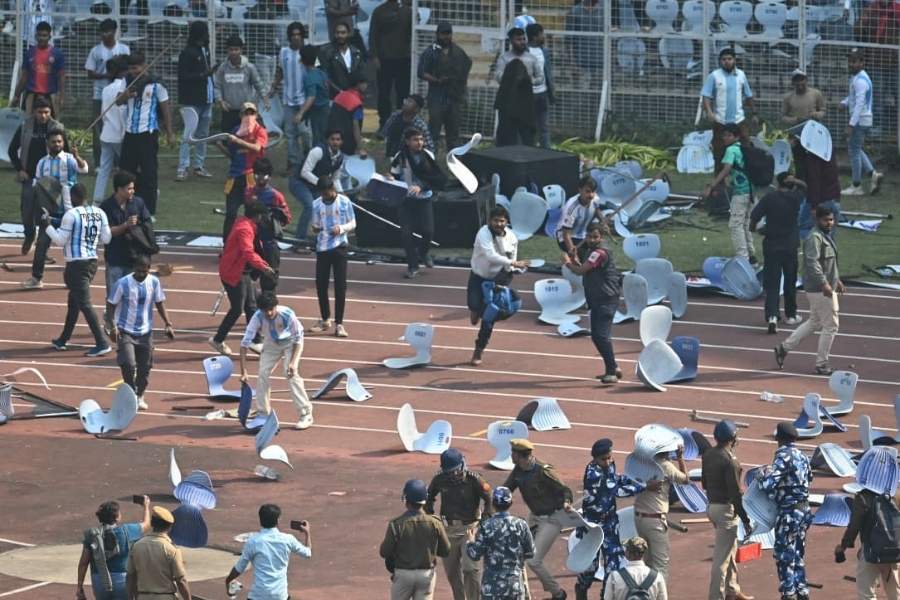 |
 |
| The Megheswar Temple in Old Town, Bhubaneswar. |
Bhubaneswar, Aug. 28: The entrance (mukhsala) and sanctum sanctorum (garva griha) of the 12th century Megheswar temple have fallen victims to waterlogging as excess rainwater cannot find its way to the temple pond.
While local residents alleged that the Shiva lingam was surrounded by knee-deep water inside the sanctum sanctorum, the condition inside the mukhsala was almost as bad.
The Telegraph first reported the sorry state of affairs of the temple and its pond on March 19.
Soon after that, Archaeological Survey of India (ASI) started cleaning of the pond in May. But local residents alleged that instead of working on a war-footing basis, the contractor had finished the work without cleaning the pond saying that the work had to be stopped due to rain.
Local councillor of ward No. 50 and a member of the temple committee, Ashok Singh, said: “An order regarding cleaning of the pond was given after a long fight with the authorities concerned. But desiltation work was never carried out completely. Only 10 per cent of the silt might have been extracted. Now, as work is stopped and excess water of the pond is seeping through the old structure, the Shiva lingam is lying flooded.”
Earlier, the historical temple pond with a rich stream-like water source had an outlet towards Gangua nullah. But as a result of unplanned and unrestricted urbanisation, houses came up in the area behind the temple and the water outlet got vanished. Now, without a dedicated outlet, excess water is ruining the temple’s structure.
“The main question now is how authorities have permitted houses near the temple and how the drainage outlet was made to cease, threatening a historical structure. Without a proper outlet to drain out excess rainwater, the pond will threaten the temple super structure. In such a situation, the base of the temple will be weakened within 25 to 30 years. The civic and development authorities are to be blamed for this, not the ASI,” said Bijay Kumar Rath, former superintendent, Orissa State Archaeology.
Kishore Kumar Mohanty, a temple committee member, alleged that the ASI should have approached the capital’s development and civic authorities to regulate growth of concrete structures near the temple. He also said the ASI should take up the issue with the Bhubaneswar Municipal Corporation (BMC) to ensure a dedicated drainage outlet for the temple pond.
Superintending archaeologist (Orissa Circle) of the ASI, A.K. Patel, said: “After development of houses in the adjacent areas, the temple pond is now lying at a lower level. The BMC should have taken measures to build a drain so that it is below the level of the pond. The engineers should also have noticed that. I will consult the civic authority so that the temple pond would be conserved in a scientific manner. We will take immediate measures to solve other structural problems.”
But local residents alleged that neither the ASI nor the BMC authorities are doing much to protect the monument. “They should also take the local residents into confidence so that the ancient structure is be conserved in a better manner,” added Mohanty.
BMC city engineer T.B.K. Shroff said: “The drainage issue of the temple pond was discussed long ago. As I have joined the civic body only a few months ago, I have to see the files and ask the executive engineer concerned to do the needful so that excess water can pass through the colony to Gangua. As the civic body has also taken a policy decision to help conserve the archaeological treasures, we will also discuss the issue with the ASI before taking any steps.”
The local councillor, however, clarified that some portions behind the temple still belong to Basuaghai gram panchayat.
“The local MLA has also advised me to meet the block development officer, but there was no concrete assurance from the revenue official. The ASI people even gave a proposal for an underground drainage outlet, but that proposal is also lying in the cold storage,” he added.











